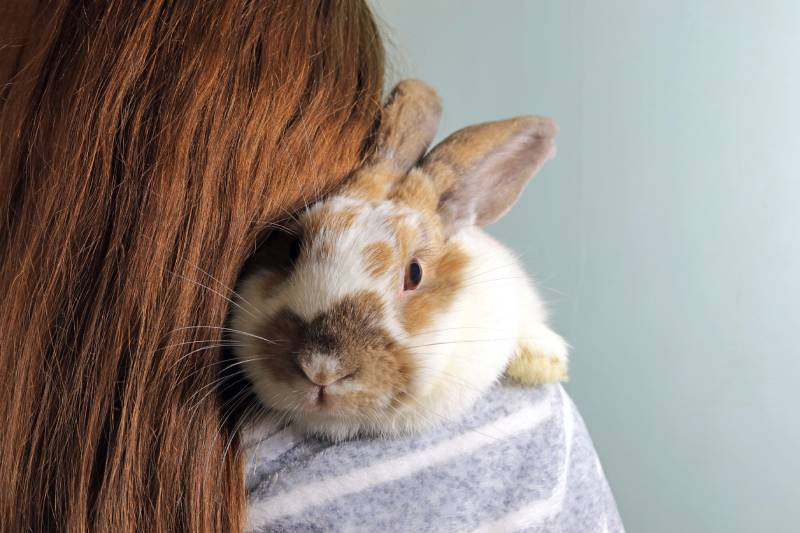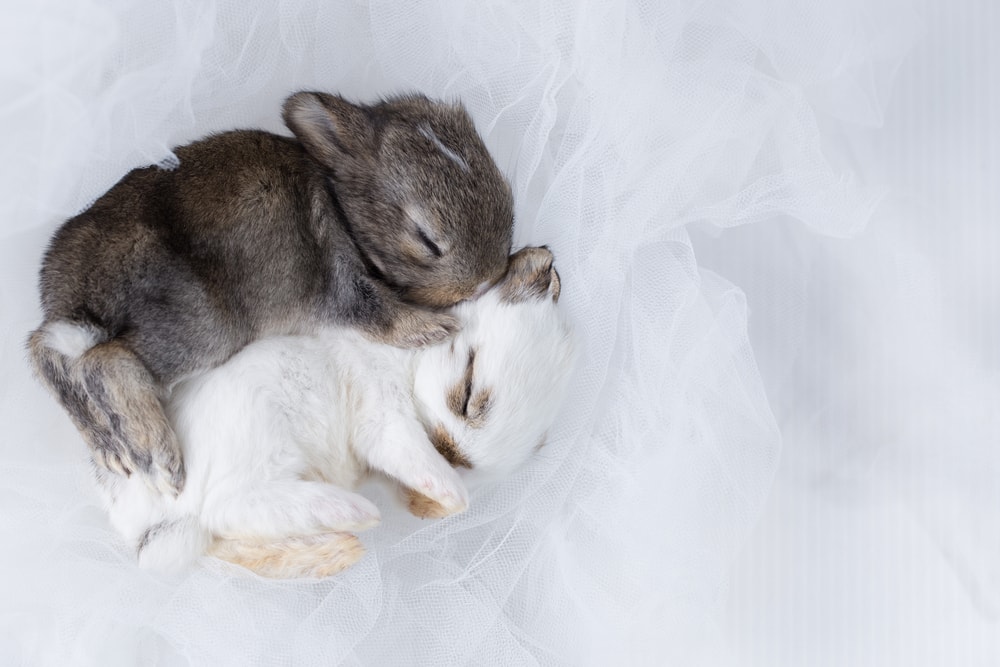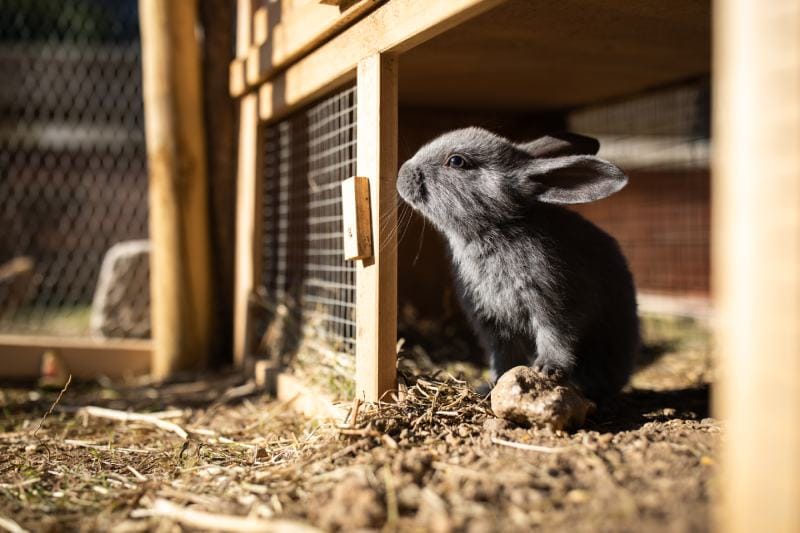How to Tell If a Rabbit Is Pregnant: 6 Vet-Approved Signs & FAQs
Updated on
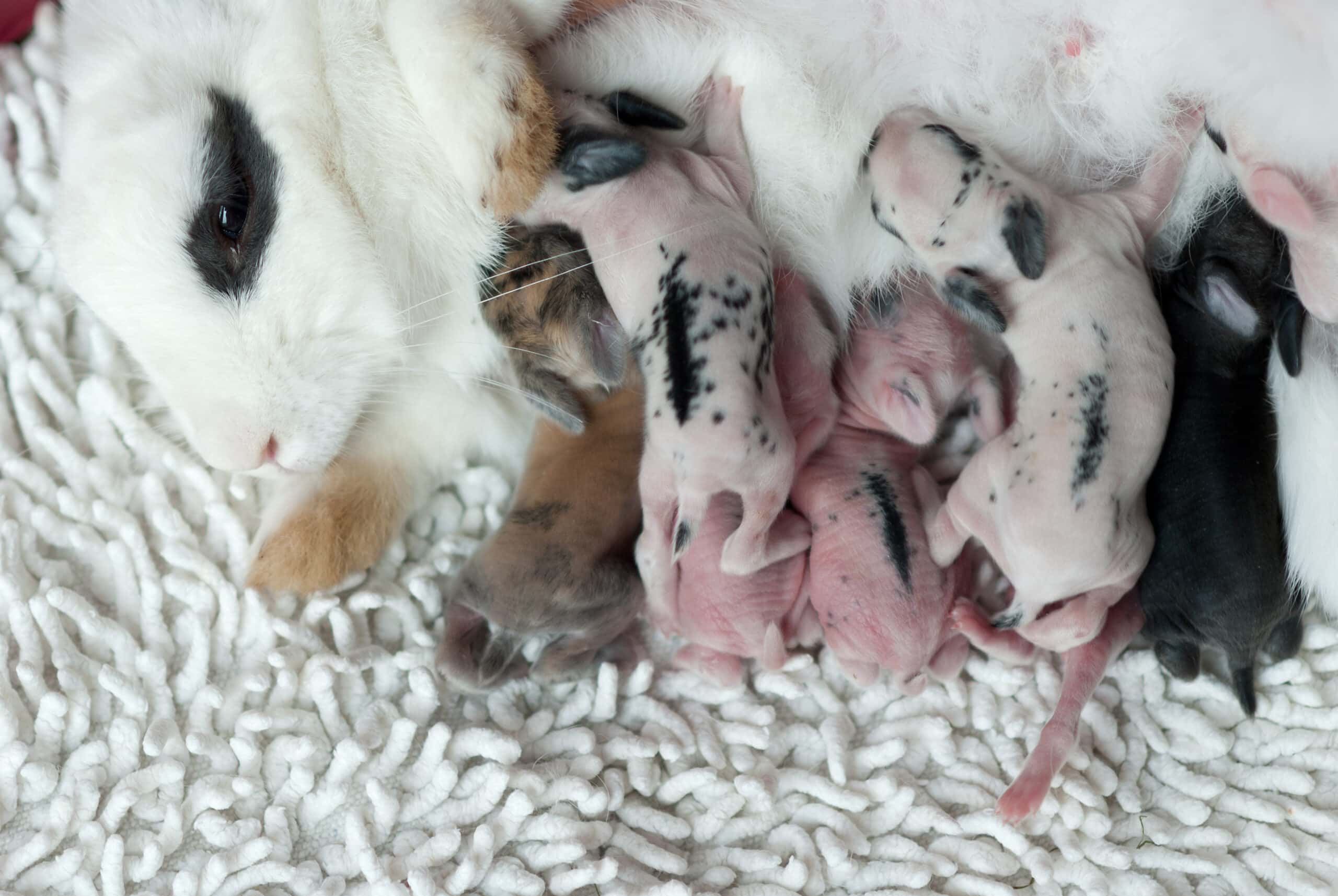
Have you ever heard the well-known phrase, “breeding like rabbits?” It comes from how young of age rabbits can start breeding, their large litter sizes, and how many litters they can have in a year.
If your female rabbit has recently been in an enclosure with an intact male and you’re wondering if she might be expecting, there are a few signs that can help you determine if she is, in fact, pregnant.
The 6 Vet-Approved Ways To Tell If A Rabbit Is Pregnant
1. Your Rabbit Has Been in the Company of an Intact Male
This one isn’t so much of a sign as an alert of sorts. If your rabbit has been in the same enclosure as an intact male rabbit, it’s quite likely that she might be pregnant, and you should start looking for any signs.
An intact male is a male rabbit that hasn’t been neutered. Female rabbits over the age of 3 1/2 months are capable of becoming pregnant, and male rabbits over the same age can impregnate a female.
Rabbits are typically only pregnant for about 1 month. So, if your rabbit was with a male more than a month ago, she is definitely not pregnant.
2. She’s Gaining Weight
This sign is trickier than you might expect. It’s not always apparent to the naked eye that your rabbit has gained weight. If you’re intentionally breeding your rabbit, you’ll want to weigh her often before she’s bred.
Once she has mated, you’ll want to start weighing her weekly. Keep it consistent, though, and always weigh your rabbit before feeding her. Use a digital scale so it can pick up the slightest weight changes. She’ll also eat more if she’s pregnant.

3. She’s Exhibiting Mood Changes
If your rabbit is normally a sweet little bun, you might notice that she’s becoming antisocial and avoiding pets or being handled. Some expectant mothers might also become aggressive and attempt to bite and even growl if you get too close to them.
However, if your rabbit is already a cranky one, it might be more difficult to determine if there’s any change in her mood.
4. You Can Feel the Babies
About 10 to 12 days into your rabbit’s pregnancy, you should be able to feel multiple small bumps in her belly. These are baby rabbits!
Just be sure to only touch her gently; if you push too hard, you might accidentally hurt the babies. Once your rabbit has been gestating for 2 weeks, don’t touch her belly—she should only be handled by a vet after that point.
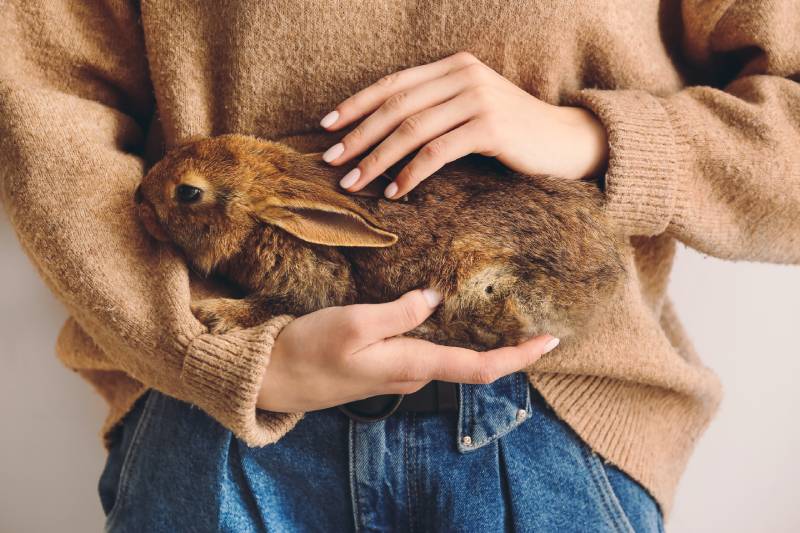
5. She’s Nesting
Pregnant rabbits will often begin nesting about a week before they give birth. She’ll start piling up the bedding and digging in the corner of her enclosure.
She’ll also carry other items, like hay, in her mouth and pile blankets and other materials into one area to make a nice, cozy nest. This will make it more comfortable for her when she gives birth.
6. She’s Pulling Out Her Fur
This sign might be disconcerting for rabbit owners who haven’t seen this behavior before. She’ll pull out fur from her sides, abdomen, and dewlap (the loose skin hanging from the neck area) and line her nest. This will help keep the babies warm.
When most pregnant rabbits start this behavior, they’ll likely give birth within a day or two.
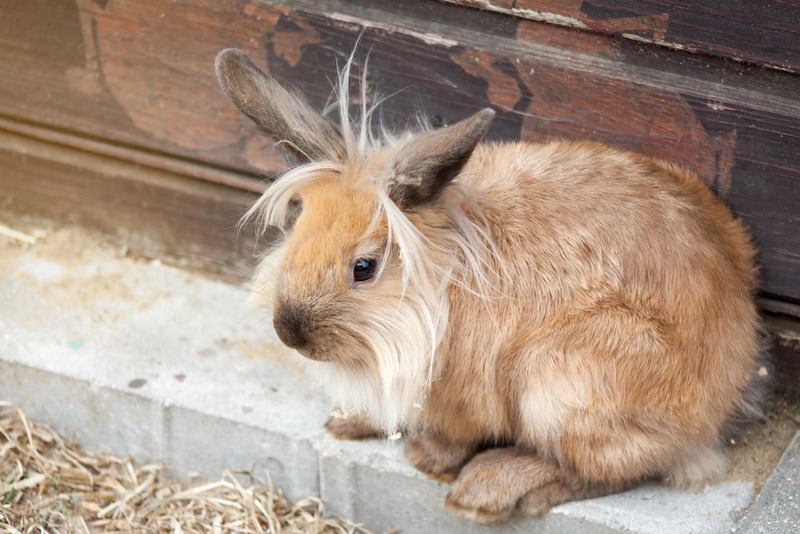
How to Help Your Pregnant Rabbit
The first thing that you should do if you suspect that your rabbit is pregnant is to take them to your vet. They can confirm the pregnancy and give you advice on the next steps, like how you should feed her and generally make her more comfortable.
Housing
You’ll need to ensure that she has enough space for her food and water bowls and her nest. The nest needs to be large enough for her and her babies, which could be as many as 12 (though the average is about five).
Ensure that she has enough fresh straw for her nest, and you’ll want to keep it clean. You can use something like a cat litter box, and putting it in her enclosure is a great way to keep an eye on mom and babies.
Feeding
Pregnant and nursing rabbits need more food to help maintain their energy levels and support themselves and their babies. Therefore, you should ensure that your rabbit is getting more fresh veggies and that she always has alfalfa hay available. Fresh water should be offered at all times, but that’s the case with most pets.

When a Rabbit Is in Labor
The average gestation period for rabbits is about 28 to 32 days. However, if she hasn’t had her babies beyond 32 days, you should see your vet immediately.
Small breeds of rabbits tend to have an average of about four or five babies in a litter, and large breeds have roughly eight to 12 babies.
When a mother rabbit gives birth, it usually only takes about 15 minutes and happens overnight, usually in the early hours of the morning. When she is in labor, it’s best to leave her to it and give her space, but once she’s done, check on the newborns. If any don’t survive, you should remove them.
Let your rabbit bond with and nurse her kits for at least a few days without any disruptions. Your presence might stress the mother, and she might even stop feeding her kits.
Also, be sure to remove the male from her enclosure so she isn’t impregnated again so soon after giving birth.
Caring for Rabbit Kits
Kits are born blind, deaf, and hairless, but by around 10 days, they will start to look more like little rabbits. They only nurse two times a day, usually at dusk and dawn, and only for about 5 minutes at a time. Rabbit milk is quite rich, and they don’t need much more than that. By 4 to 6 weeks old, the kits will be fully weaned.
You should ensure that the doe (mother rabbit) also has space all to herself. Since rabbits are prey animals, their instincts are to stay away from their litter in order to draw predators away.
Overall, the enclosure needs enough space for the kits’ nest and an area for the doe to spend time by herself while still having constant and easy access to the nest.
Finding the Kits a Home
Rabbit kits are typically allowed to leave their mother by about 8 weeks of age, so this is when you can start finding homes for them. However, you don’t want to send them off with just anyone. Their future owners should be able to afford their upkeep and have knowledge about rabbit care. This means having a nice-sized and clean enclosure and a responsible adult always on hand to look after them. Also, whatever you do, do not give away baby bunnies around Easter.
Conclusion
For some pregnant rabbits, it might be almost impossible to tell that they are pregnant until you’ve got baby rabbits on your hands.
For the most part, though, if you pay attention to the signs listed here, it shouldn’t be too difficult for you to figure out if your rabbit is pregnant.
But if you’re in doubt or have questions, speak to your veterinarian. They can answer your questions and give you more advice on caring for your pregnant bunny.
See Also:
- When Were Rabbits Domesticated: Origins, Historical Facts & Popular Breeds
- Male vs Female Rabbit: Differences Explained (With Pictures)
Featured Image Credit: Cait Eire, Shutterstock



